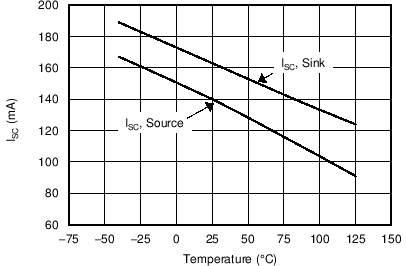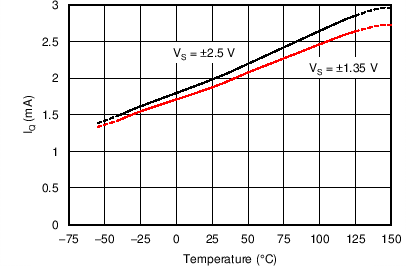SBOS690A July 2016 – December 2019 OPA2626
PRODUCTION DATA.
- 1 Features
- 2 Applications
- 3 Description
- 4 Revision History
- 5 Pin Configuration and Functions
- 6 Specifications
- 7 Parameter Measurement Information
- 8 Detailed Description
- 9 Application and Implementation
- 10Power Supply Recommendations
- 11Layout
- 12Device and Documentation Support
- 13Mechanical, Packaging, and Orderable Information
Package Options
Mechanical Data (Package|Pins)
- DGK|8
Thermal pad, mechanical data (Package|Pins)
- DGK|8
Orderable Information
6.7 Typical Characteristics
at TA = 25°C, V+ = 5 V, V– = 0 V, VCOM = VO = 2.5 V, gain (G) = 2, RF = 1 kΩ, CF= 2.7 pF, CLOAD= 20 pF, and RLOAD = 2 kΩ connected to 2.5 V (unless otherwise noted)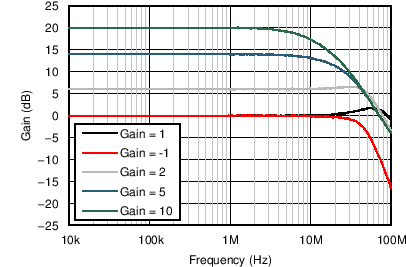
| VO = 10 mVPP |
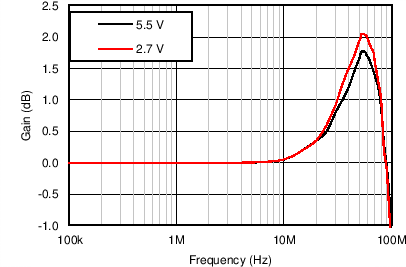
| VO = 10 mVPP, G = 1 |
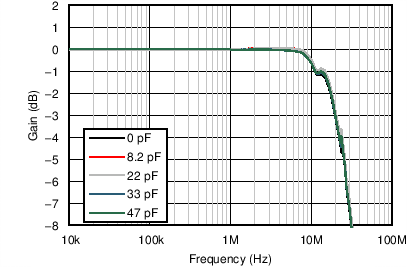
| VO = 2 VPP, G = 1 |

| VO = 10 mVPP | ||
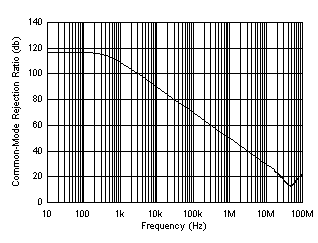
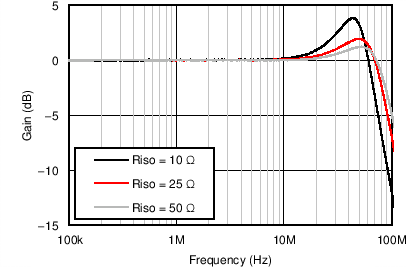
| G = 1, CLOAD = 1.2 nF | ||

| G = –1, VO = 10 mVPP | ||
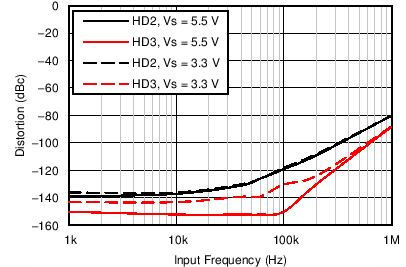
| G = 1, VO = 2 VPP, RLOAD = 600 Ω | ||
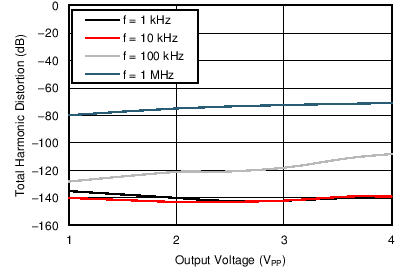
| G = 1, RLOAD = 600 Ω | ||
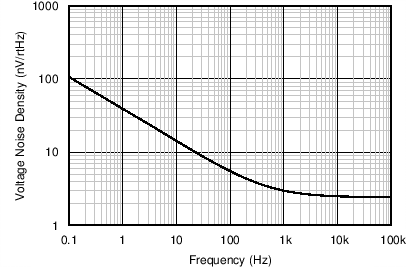
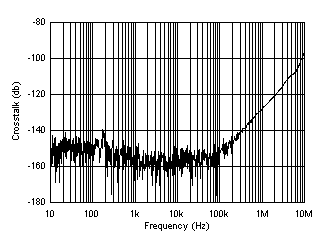
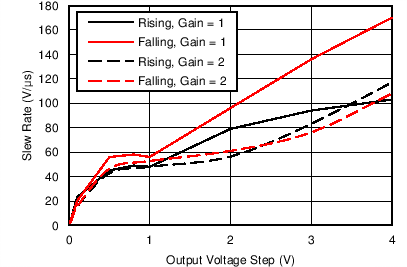
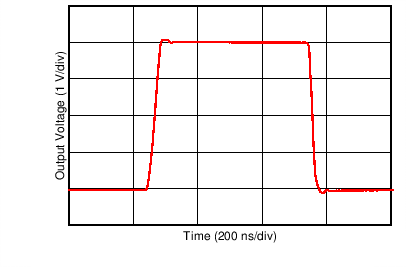
| G = 1, VO = 4-V step | ||
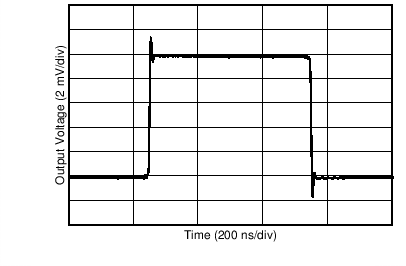
| G = 1, VO = 10-mV step | ||
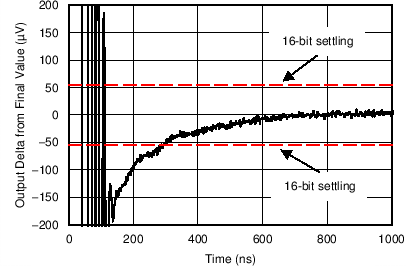
| VO = 3.6-V step at t = 0 s | ||
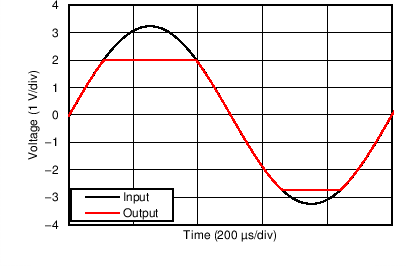
| VS = ±2.75 V, G = 1 | ||
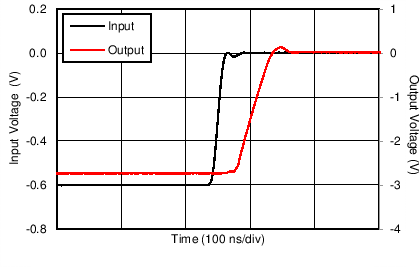
| VS = ±2.75 V, G = 5 | ||
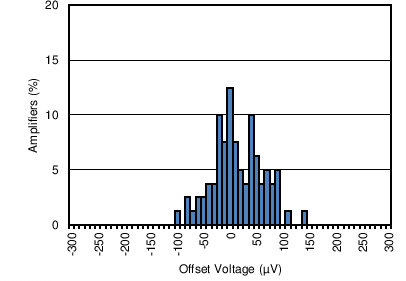
| Distribution taken from 80 amplifiers, TA = 125°C | ||
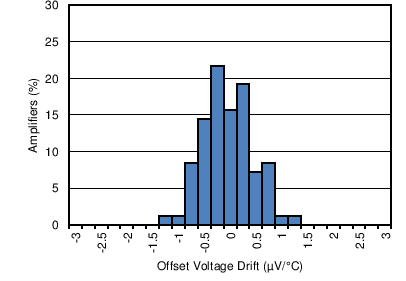
| Distribution taken from 75 amplifiers, TA = –40°C to +125°C |
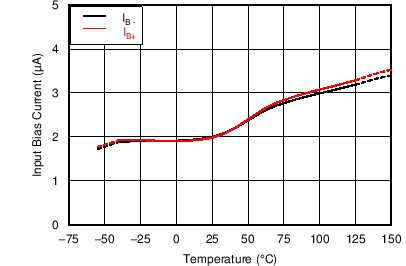
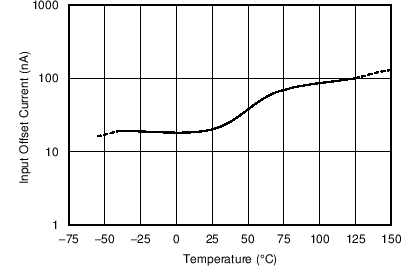
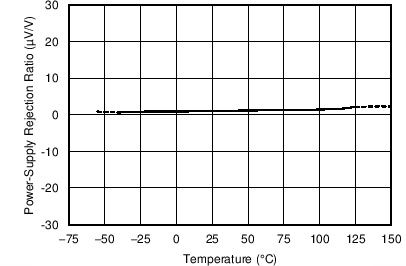
| 2.7 V ≤ VS ≤ 5.5 V | ||
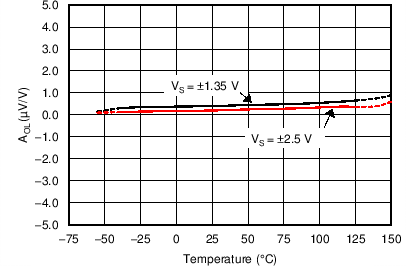
| RLOAD = 600 Ω | ||
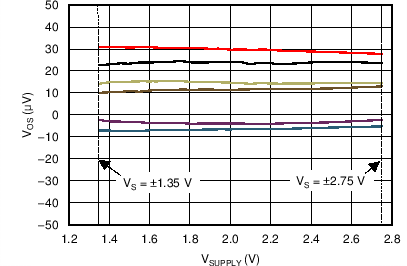
| 6 typical units shown, VS = ±1.35 V to ±2.75 V | ||
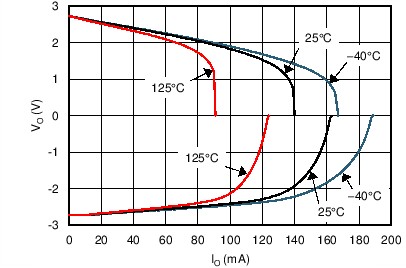

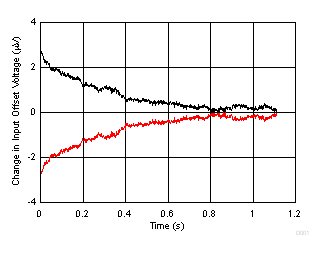
| Powered on at t = 0 s, PCB dimensions: 4 in2, 2 layer, FR4 |
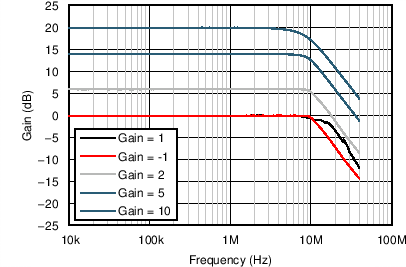
| VO = 2 VPP |
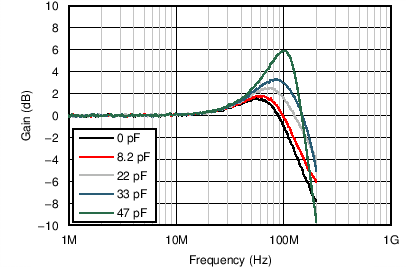
| VO = 10 mVPP , G = 1 |
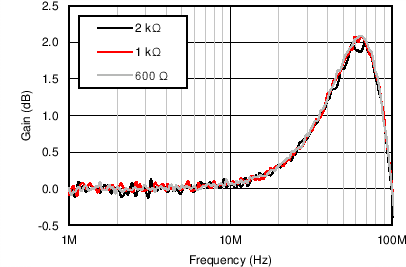
| VO = 10 mVPP , G = 1 |
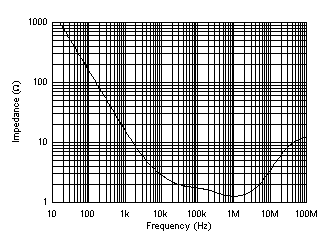
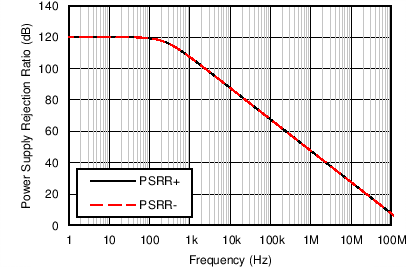
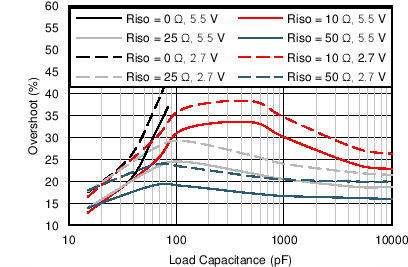
| G = 1, VO = 10 mVPP | ||

| VS = 5.5 V, VO = 2 VPP, RLOAD = 600 Ω | ||
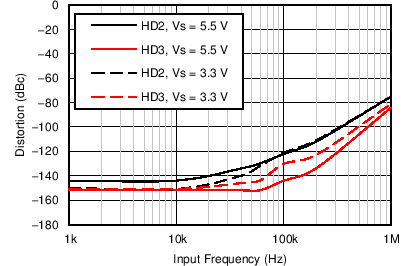
| G = 2, VO = 2 VPP, RLOAD = 600 Ω | ||
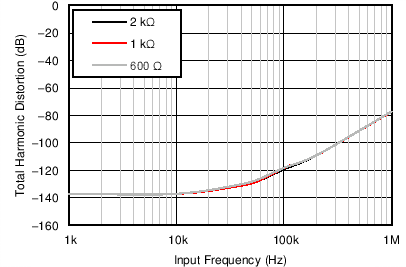
| G = 1, VO = 2 VPP , RLOAD = 600 Ω | ||
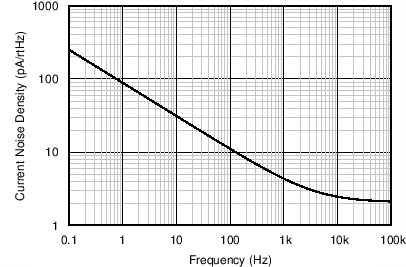
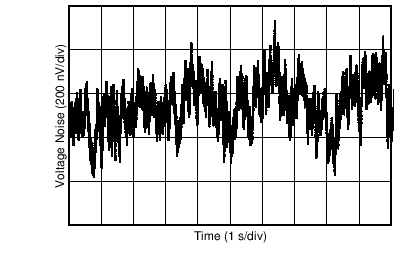
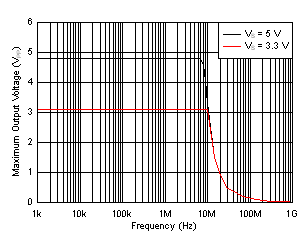
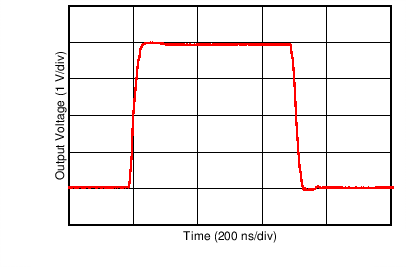
| G = –1, VO = 4-V step | ||
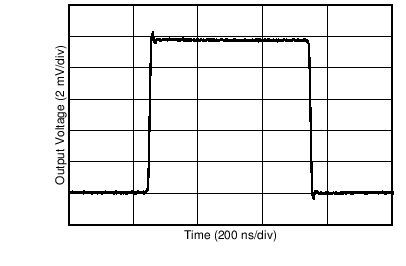
| G = –1, VO = 10-mV step | ||
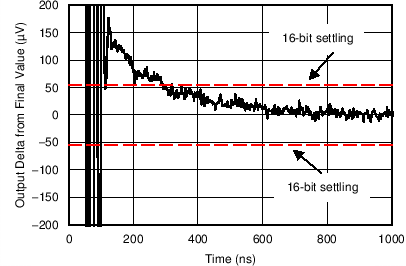
| VO = 3.6-V step at t = 0 s | ||
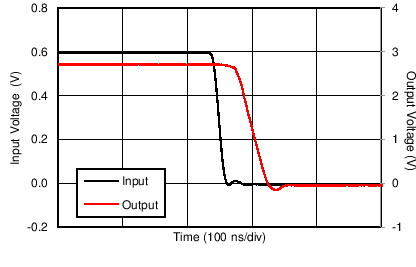
| VS = ±2.75 V, G = 5 | ||
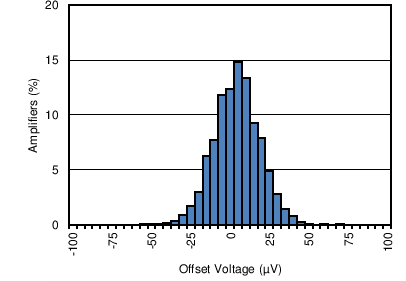
| Distribution taken from 3139 amplifiers, TA = 25°C | ||
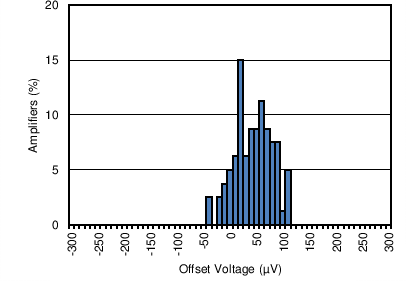
| Distribution taken from 80 amplifiers, TA = –40°C | ||
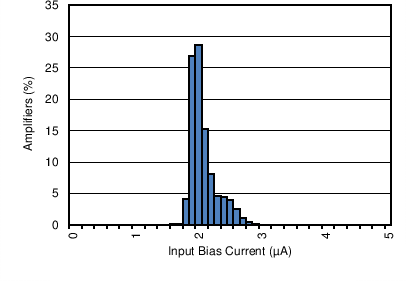
| Distribution taken from 3139 amplifiers |
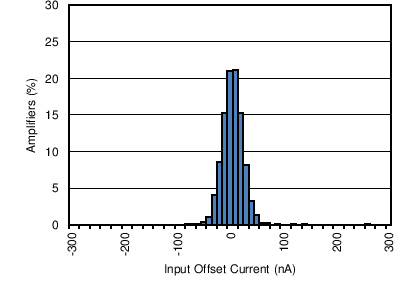
| Distribution taken from 3139 amplifiers |
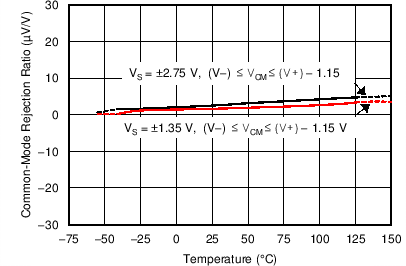
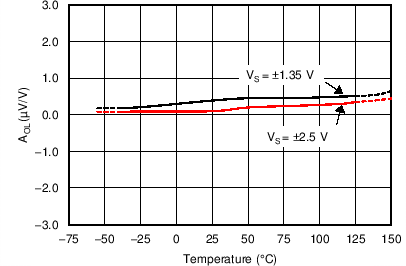
| RLOAD = 10 kΩ | ||
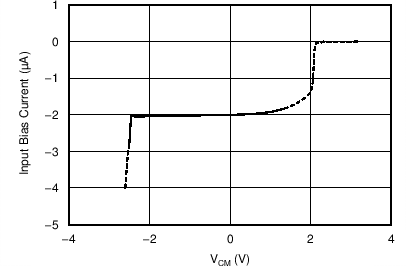
| VS = ±2.5 V | ||
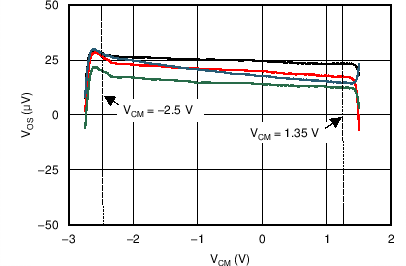
| 6 typical units shown, VS = ±2.5 V | ||
